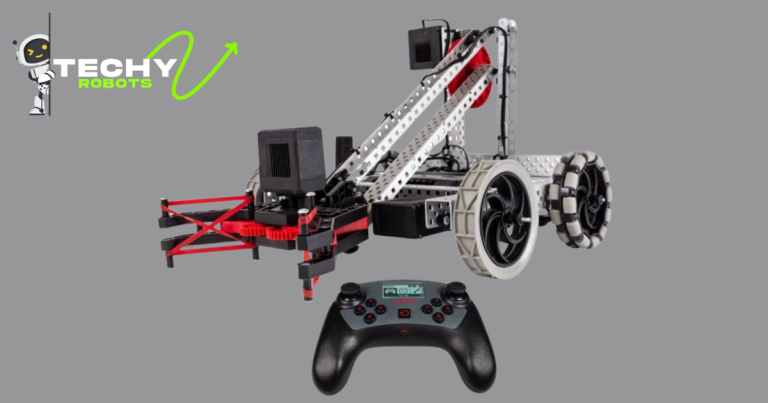In today’s digital age, the call for high-performance notebooks with dedicated portrait cards is ever-developing. Whether you’re a gamer, video editor, or professional clothier, having a devoted GPU can notably decorate your computing experience.
Unlike integrated photographs, dedicated GPUs include their personal reminiscence and processing electricity, allowing for smoother and more green managing of graphics-in-depth tasks..
Choosing the right dedicated photo card can be a frightening challenge with several alternatives, from high-cease NVIDIA GeForce RTX collection to finances-pleasant AMD Radeon GPUs.
Top Dedicated Graphics Cards for Notebooks
The options may be overwhelming when selecting a dedicated graphics card for notebooks. Here are some of the pinnacle devoted GPUs that provide satisfactory performance for gaming, video editing, and expert programs:
- NVIDIA GeForce RTX 3080:
- It is one of the most effective notebooks and best for gaming and expert responsibilities.
- It features an Ampere structure, providing tremendous ray tracing and AI skills.
- High VRAM potential (as much as 16GB) ensures smooth overall performance in worrying applications.
NVIDIA GeForce RTX 3070:
- It is an extra low-cost choice compared to the RTX 3080, still offering high-quality performance.
- Suitable for high-top gaming and innovative paintings.
- It comes with 8GB of GDDR6 memory, hanging a balance between overall performance and fee.
NVIDIA GeForce RTX 3060:
- Provides a high-quality balance of overall performance and price.
- Capable of dealing with contemporary games at excessive settings and supports ray tracing.
- It is ideal for mid-range gaming laptops and access-stage expert use.
AMD Radeon RX 6800M:
- AMD’s pinnacle-tier supply for notebooks competed immediately with NVIDIA’s high-stop GPUs.
- Based on RDNA 2 architecture, it presents a sturdy performance in gaming and content introduction.
- It has 12GB of GDDR6 memory, making it a practical preference for numerous packages.
NVIDIA GeForce GTX 1660 Ti:
- A strong desire for budget-conscious consumers who still need suitable gaming overall performance.
- It lacks ray tracing; however, it offers first-rate 1080p overall performance.
- Comes with 6GB of GDDR6 memory, appropriate for much less worrying professional tasks.
How to Choose a Laptop with a Dedicated GPU
Selecting the suitable PC with a devoted GPU entails considering numerous factors:
Purpose:
- Identify what you will use the laptop for, such as gaming, video modifying, 3-D rendering, or widespread use.
- High-cease GPUs like the RTX 3080 are extremely good for intensive tasks, while mid-range options like the RTX 3060 are appropriate for standard use and slight gaming.
Budget:
- Determine your price range, as devoted GPUs can significantly grow the fee of a PC.
- Balance your desires with what you can afford, making sure you get the best return on your money.
Display:
- Consider the display decision and refresh charge. High-quit GPUs can drive 4K displays and high-refresh-charge monitors for smoother visuals.
- Ensure the computer’s display suits the GPU’s ability to avoid bottlenecks.
Cooling Solutions:
- High-overall performance GPUs generate sizeable warmth, so green cooling is vital.
- Look for laptops with superior cooling structures, consisting of more than one fan and vapor chamber cooling.
Battery Life:
- Dedicated GPUs devour more incredible energy, affecting battery lifestyles.
- If portability and battery durability are essential, look for laptops with optimized electricity control capabilities.
Notebook Graphics Card Performance Benchmarks
Benchmarks offer a standardized way to evaluate the performance of different GPUs. Here are some key benchmarks used to assess pocketbook GPUs:
3DMark:
- Widely used for assessing gaming performance.
- Measures how nicely a GPU handles 3-D graphics rendering.
Unigine Heaven and Unigine Superposition:
- Stress tests for GPUs that offer insights into thermal performance and stability under load.
- It is suitable for comparing real-world gaming performance.
SPECviewperf:
- Focuses on expert photographs’ overall performance.
- It is helpful for users who want GPUs for CAD, 3-D modeling, and other professional applications.
Cinebench:
- Tests GPU performance in rendering obligations.
- Valuable for content creators and professionals in video editing and 3-D rendering.
Blender:
- Open-supply 3D advent suite with a built-in benchmark.
- Measures rendering performance, making it relevant for animators and 3-D artists.
Dedicated GPU for Video Editing Laptops
Video enhancement requires an effective GPU to address high-decision pictures, results, and rendering. Here are a few pinnacle selections for video-enhancing laptops with devoted GPUs:
NVIDIA GeForce RTX 3080/3070:
- Exceptional overall performance in rendering and real-time playback of excessive-resolution video.
- CUDA cores decorate performance in video editing software programs like Adobe Premiere Pro and DaVinci Resolve.
AMD Radeon RX 6800M:
- Excellent for video modifying, especially with software programs that benefit from AMD’s structure.
- High VRAM ensures clean editing of 4K and better-resolution movies.
NVIDIA Quadro Series:
- Designed especially for professional packages.
- Offers advanced balance and overall performance in professional video enhancing and 3D packages.
Apple M1 Pro and M1 Max:
- Integrated GPUs in these chips offer sudden performance, making MacBooks with these processors fantastic for video enhancement.
- It is optimized for software programs like Final Cut Pro.
Upgrading Notebook Graphics Card
Upgrading a PC’s GPU is commonly impossible because of the incorporated nature of maximum pocket book GPUs. However, there are a few options:
External GPU (eGPU):
- Connects to the computer through Thunderbolt 3 or USB-C.
- It provides laptop-level GPU overall performance for laptops, making it a viable upgrade course for better overall portrait performance.
Modular Laptops:
- Some laptops, like the Alienware Area-51m, offer modular additives, considering GPU enhancements.
- Ensure the computer supports such enhancements before shopping.
Future-Proofing:
- Invest in a computer with a high-quit GPU to extend its relevance.
- Consider laptops with strong thermal solutions to handle potential GPU enhancements if they become possible.
FAQs
Can I upgrade my pocketbook GPU?
Generally, upgrading a computer’s GPU isn’t viable because of its integration into the motherboard. However, a few laptops with modular designs or outside GPU assistance provide constrained upgrade alternatives.
How much VRAM do I want for gaming?
For contemporary games at 1080p, 4-6GB of VRAM is enough, for better resolutions like 1440p or 4K, 8GB or greater is suggested.
Are AMD GPUs excellent for notebooks?
Yes, AMD GPUs, like the Radeon RX 6800M, offer competitive performance and are appropriate for gaming and professional tasks.
What is the difference between NVIDIA GeForce and Quadro GPUs?
GeForce GPUs are designed for gaming and standard use, even as Quadro GPUs are optimized for professional applications requiring excessive precision and balance.
Do I need a committed GPU for video editing?
A dedicated GPU extensively complements video editing’s overall performance, specifically for rendering and applying results. High-quit GPUs are advocated for 4K editing and past.
Conclusion
Choosing the proper notebook with a dedicated picture card entails knowing your precise desires, price range, and the overall performance benchmarks of various GPUs.
Whether for gaming, video editing, or expert paintings, the marketplace gives several options, from high-cease powerhouses like the NVIDIA RTX 3080 to more price-range-friendly choices like the GTX 1660 Ti.
Outside GPUs present a feasible option for those trying to improve, even though not all laptops guide this. By thinking about elements with purpose, budget, display necessities, and cooling solutions, you can make a knowledgeable decision to locate the ideal computer for your needs.




